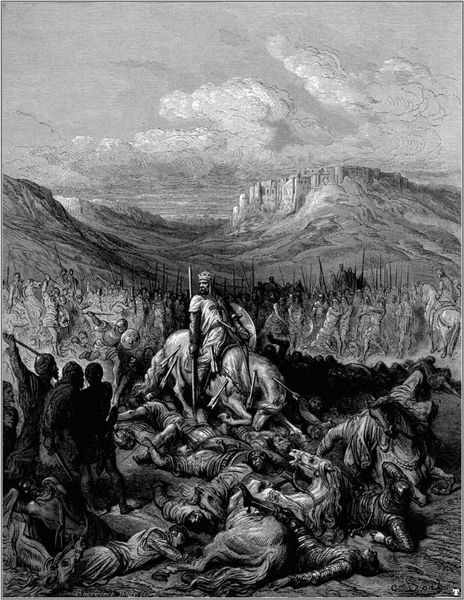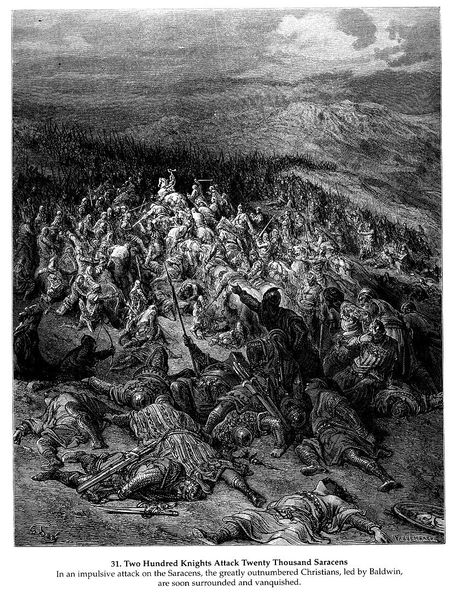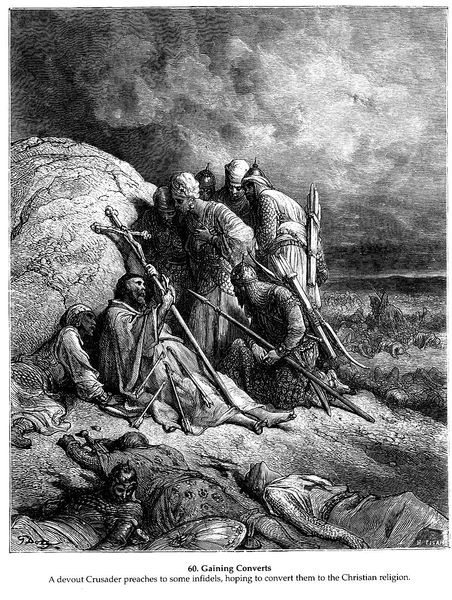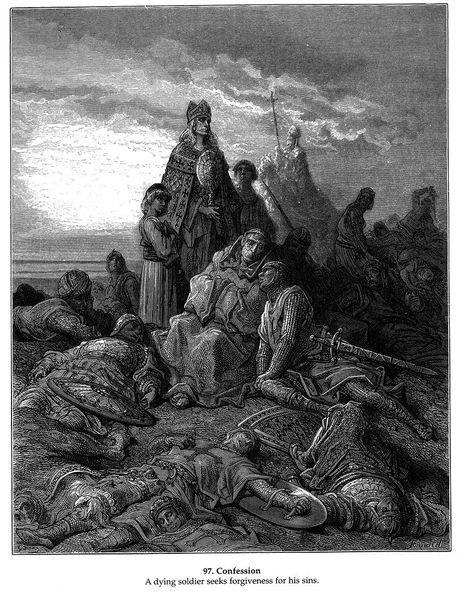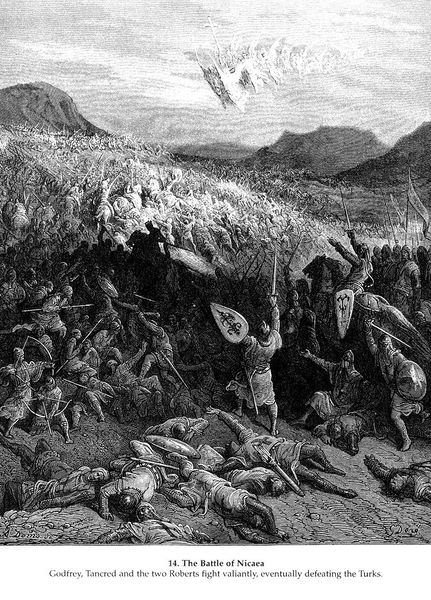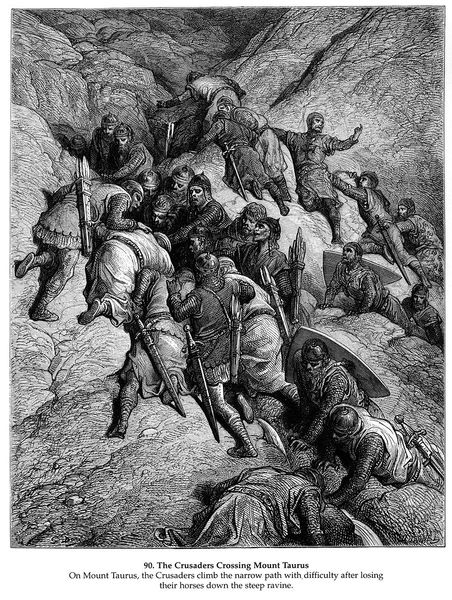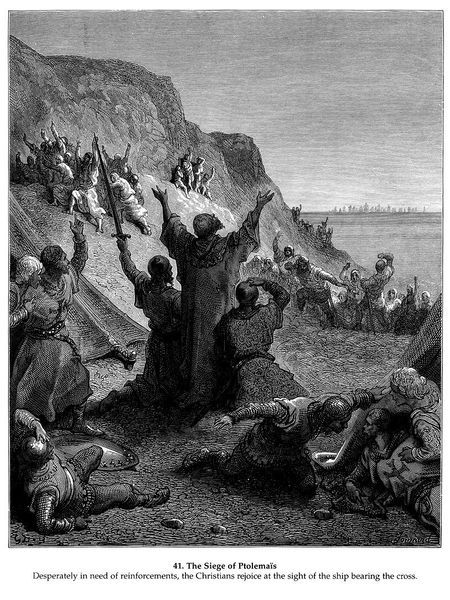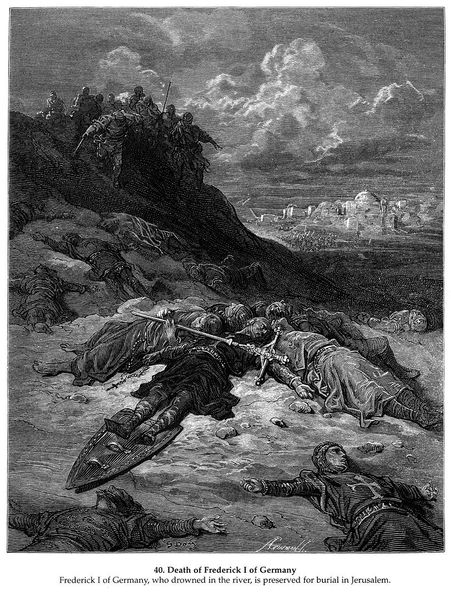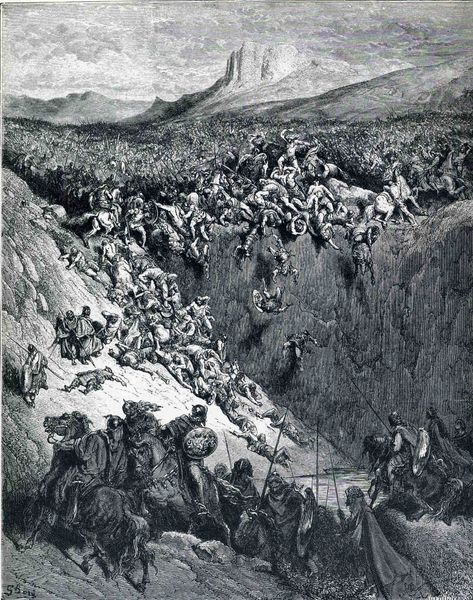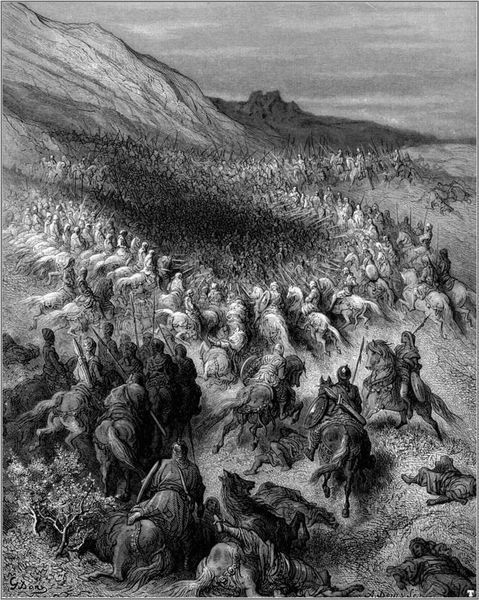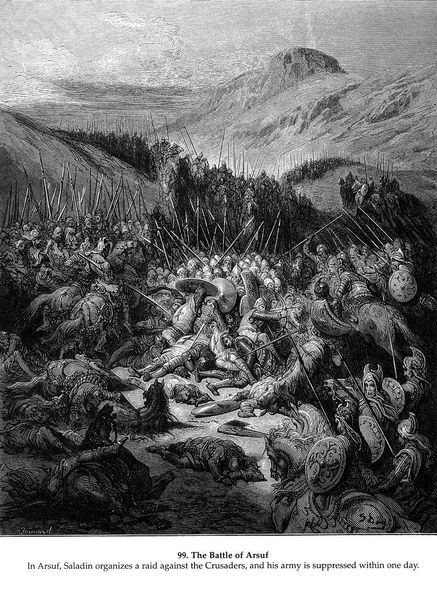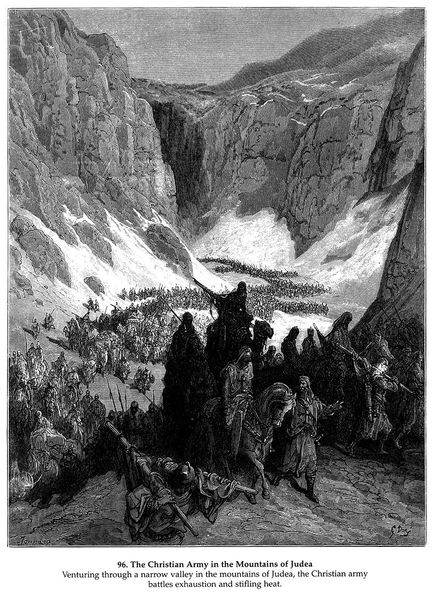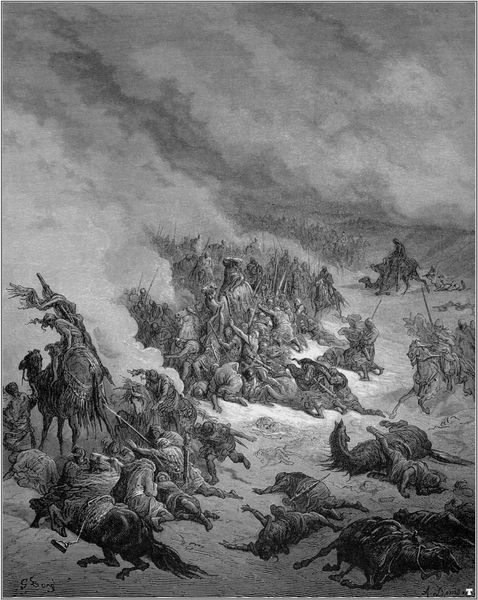
drawing, print, engraving
#
drawing
#
medieval
#
narrative-art
# print
#
war
#
landscape
#
figuration
#
history-painting
#
engraving
Copyright: Public domain
Editor: This is an engraving called "Burying the Dead After the Battle of Dorylaeum," by Gustave Doré. It looks incredibly bleak and overwhelming. So many bodies! What's your take on it? Curator: Overwhelming is the right word! Doré had a knack for capturing the sheer scale of human events, particularly tragic ones. The print fairly screams of desolation, doesn't it? Notice how he contrasts the prone bodies in the foreground with that mass of tiny, almost ant-like figures stretching towards the horizon. What does that contrast evoke for you? Editor: A sense of endlessness, I think. Like the sorrow goes on and on. Also, there's a tent with a cross; that suggests a formal, almost bureaucratic, approach to grief, which feels very strange. Curator: Precisely! It's the institutionalization of mourning amidst absolute chaos. The 'correct' thing to do clashing with the visceral horror of the aftermath. Consider the landscape itself - craggy, inhospitable. Almost like the land is mirroring the event. Doré used light and shadow so dramatically. What do you think the areas of deep shadow are meant to emphasize? Editor: Concealment, maybe? The horror you don't quite see is somehow worse? Or maybe it is about creating the tonal drama... a very baroque approach? Curator: That’s beautifully put! The veiled is often far more terrifying than what is fully exposed. He pulls us in by revealing small pockets of grief, amidst a landscape of muted trauma. He invites us to look deeper. You know, pondering it more, it reminds me how so many depictions of war focus on battles, victory, strategy...Doré focuses solely on what’s *left* after all of that, which feels like the bigger truth, somehow. Editor: Yes, I think I will always see war a little differently after really looking at this.
Comments
No comments
Be the first to comment and join the conversation on the ultimate creative platform.
